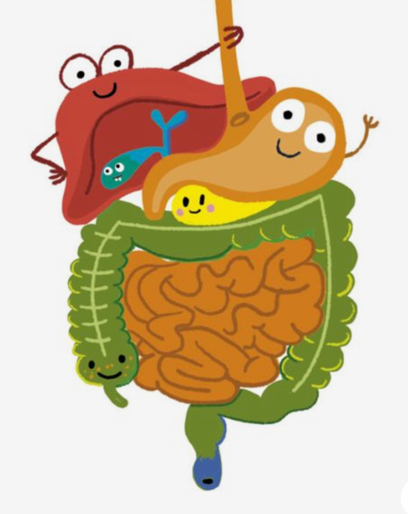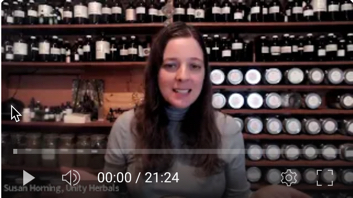The GIT (Gastrointestinal tract) is comprised a long tube referred to as the alimentary canal, that runs from the mouth to the anus, and the associated organs that interact with it along the way. The canal is lined with surface epithelial cells, a mucosal and submucosal layer, as well as a muscle layer made up of smooth muscle cells. The layers of the gut have a network of nerves called the ENS (enteric nervous system), which contain over 100 million neurons, similar to those in the brain. The enteric nervous system supports digestive processes with parasympathetic stimulation (rest and digest response), and is inhibited by sympathetic stimulation (fight or flight, or stress response).
Did you know that 95% of our body’s serotonin (our feel-good hormone) is produced in the gut?

If you listen to your gut with a stethoscope, you should hear lots of gurgles as food is digested and broken down through hydrolysis – adding a water molecule to break down food for absorption. The process of digestion begins in the mouth, where the first level of breakdown occurs through mastication.
Mechanical digestion (chewing) adds saliva to our food, which begins to break it down on it’s way to the stomach. Muscular churning in the fundus of the stomach mixing it with gastric juice, an extremely acidic substance that helps turn the food into a liquid substance called chyme. Muscular peristalsis moves chyme into the small intestine through a process of gastric emptying, generally about 2-6 hours after eating, depending on what you’ve eaten (fruit and veg take about an hour, and meat can take up to 6 hours in the stomach to be broken down).
Chemical digestion progresses in the small intestines, where most of the nutrition from our food is digested and absorbed by the body. This process is supported by the organs of the liver, gall bladder and pancreas, which regulate bile secretions and blood sugar levels. Bile is a substance that breaks down fats to assist with their assimilation. The last stage of digestion happens in the colon, which works to reabsorb water, and excrete undigestible fiber and other waste products, including unwanted hormones.
By accurately assessing the location of the problem, we can use herbal support to enhance lots of different phases of digestion!
Is there enough or too little stomach acid? How much bile is being produced? What is the condition of the organs of digestion? What is the condition of the surface of the alimentary canal? How hydrated is the body in general? How often are bowel movements?
Let’s not forget the most important indicator of a healthy digestive system: our DIET. A diet rich in fibre and low in saturated fats and animal protein can improve our gut health the most. Pre-biotic foods, fermented foods, and a diverse diet rich in fruits and vegetables is the best way to enhance our microbiome, and our capacity to have a healthy and functional digestive system.
Herbal Support: Strategize and target your digestive phase and take corrective action!
BITTERS
Achillea millefolium, Artemisia vulgaris, Eupatorium perfoliatum, Humulus lupuls, Tanacetum parthenium, Arctium lappa.
CARMINATIVES
Mentha X piperita, Matricaria recuitita, Melissa officinalis, Occimum sanctum, Foeniculum vulgare, Piminella anisum
ADAPTOGENS / NERVOUS SYSTEM SUPPORT
Hypericum perfoliatum, Avena sativa, Passiflora incarnata, Scuttellaria lateriflora
CHOLOGOGUES / CHOLERETICS
Curcuma longa, Taraxacum radix/folia, Artemesia vulgaris, Dioscorea villosa, Hydrastis canadensis, Silybum marianum
MUCILAGES
Plantago officinalis, Althaea officinalis, Glychyrriza glabra, Ulmus rubra, Aloe vera
ANTIPARASITICS
Artemesia absynthium, Juglans nigra, Szygium aromaticum
LAXATIVES
Aloe vera, Glychyrriza glabra, Coffee arabica, Linum usitatissimum, Plantago psyllium, Senna alexandrina, Rumex crispus
ASTRINGENTS
Capsella bursa pastoris, cinnamomum verum, Plantago major, Ulmus rubra
References:
Waller, Pip. Holistic Anatomy: An integrative Guide to the Human Body. North Atlantic Books 2009
Marciano, Marisa. Evidence Informed Botanical Medicine. Professional Health Systems 2015






